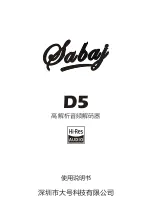
2.4 Accessing the PC Card
There are NO USER JUMPERS or other on-card controls. ALTHOUGH IT IS NOT RECOMMENDED AND
MAY VOID THE WARRANTY the following shows how to remove the printed circuit board (PCB) from the
extrusion:
1. ALWAYS REMOVE POWER when installing or removing the PCB from the extrusion
2. Remove four (4) rear panel screws (see Figure 2.3).
3. GENTLY pull the rear panel and PCB assembly completely out of the extrusion.
4. To install the PCB, GENTLY push the rear panel and PCB assembly completely into the extrusion
Make sure the shield goes in the lower channel and the PCB in the next channel above that in the
extrusion and that the front panel controls go through the front panel holes.
5. Install four (4) rear panel screws.
EXTRUSION
FRONT SCREWS (4EA)
FRONT PANEL
RACK MOUNT PANEL (FOR -R MODELS ONLY)
REAR SCREWS (4EA)
PCB
ASSEMBLY
REAR PANEL
WALL
POWER
SUPPLY
(-P and -P4 ONLY)
2005 TEST CONVERTER
C
ROSS
T
ECHNOLOGIES, INC.
DC
100MHz
FREQUENCY
10MHz 1MHz
GHz
LO
IF
C
KU
70 140
ALARM
FIGURE 2.3 2005 Assembly Drawing
2.5
Installation / Operation
2.5.1
Installing and Operating the 2005-10
1. If using the receiver LNB voltage to power the 2005-10, be sure +14 to +24 VDC is on the RF
center conductor. If using the wall power supply (
options -P or -P4
), connect the power supply to
the DC POWER connector and either 120 VAC (
-P
) or 100-240 ±10% VAC (
-P4
) (Figure 2.2)
2. Select either C or KU band (SW6) and either 70 or 140 MHz IF (SW5) using the front panel
switches (Figure 2.1).
3. Select either HI or LOW GAIN using the switch (SW7) on the rear panel (Figure 2.2).
4. Connect a -10dBm max (LOW GAIN) or -25 dBm max (HI GAIN) signal to IF In, J1 (Figure 2.2).
5. Connect the RF OUT, J2, to the receiver under test (Figure 2.2).
6. Set BCD switches, SW1 to SW4, to the desired frequency (Figure 2.1).
7. Be sure DS1 (green, DC Power) is on and DS2 (red, Alarm) is off (Figure 2.1).
2005-10 Manual, Rev. B
Page 6
4/28/09


























